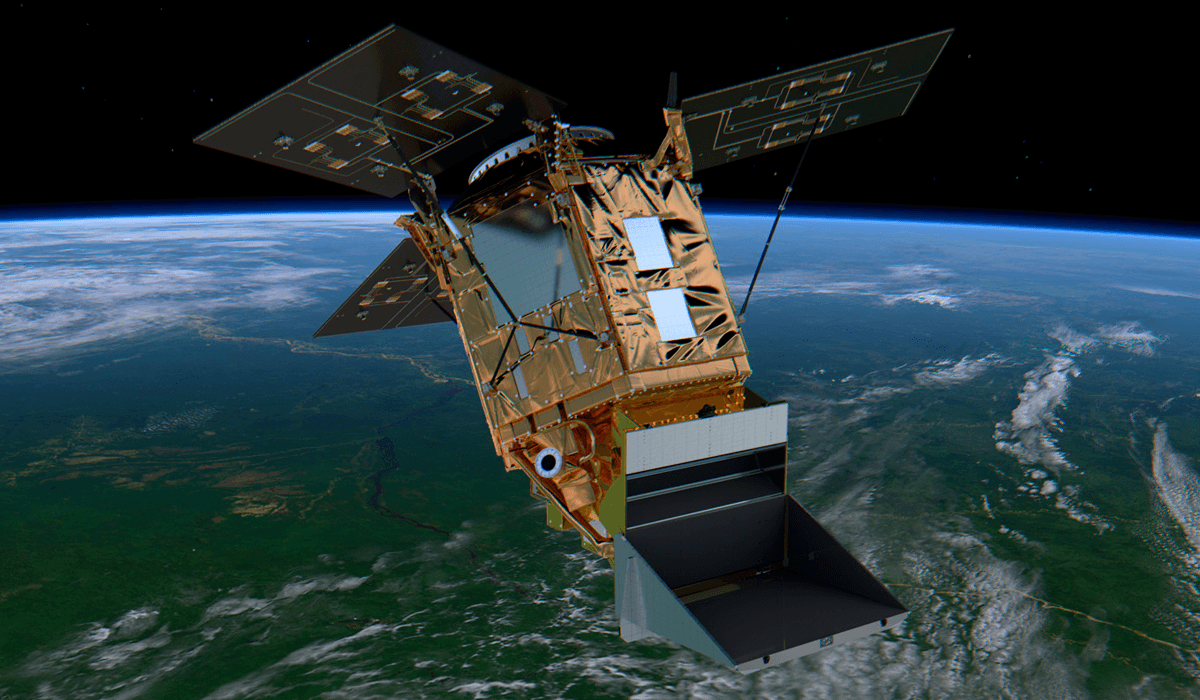The objective of the project is the commissioning and validation of the onboard unit SWIR (Short-Wave Infrared) - Front End (programmable converter), for satellites operating within the Sentinel-5 Mission, which in turn is part of "Copernicus", European Earth Observation Program, coordinated and managed by the European Commission (EC) and sponsored by the European Space Agency (ESA).
SWIR is the subset of the infrared band in the electromagnetic spectrum, which covers wavelengths between 1 and 2.5 microns. This wavelength is not visible to human eyes and as a result it can often deliver a better image than can be achieved with visible light images. Its appearance and weight are those of a small metal box smaller than a shoe box, which enables a formidable integration into the satellite.
Its main functionality lies in the conversion of analog signals from the infrared spectrum to digital signals from images of the earth. Thanks to digital data, images or "photographs" are formed that the satellite sends to Earth as a product of the Sentinel-5 Mission. Analog signals are acquired by means of a system based on a high-resolution spectrometer that operates in the Short-Wave infrared range. The Front End has standard interfaces that allow power supply, unit control, and scientific data collection and transmission.
The FEE SWIR communicates under the SpaceWire protocol, standard ECSS-E50-12A of the European Cooperation for Space Standardization (ECSS), which functions as a communications network designed for spacecraft and based on a standard for networks and high-speed links, facilitating the interconnection of sensors, mass memories, processing units, and downlink telemetry subsystems. The SpaceWire equipment is connected to each other via SpaceWire links, among which we can find serial, high speed (2 Mbits / sec to 200 Mbits / sec), bidirectional and full duplex. The information collected, "photographs", are sent using the SpaceWire link through discreet information packets.
Thanks to a series of pre-established remote controls that regulate the status of the unit, it comes into operation and the analogue acquisition, conversion to digital and data are sent to the scientific computer of the satellite, so that it in turn retransmits them to the earth station. In this project we have developed expert functionalities at the Electrical Ground Support Equipment (EGSE) level, first line of problem solving and technical incidents and implementation of solutions, creation, and monitoring of NCRs resolutions (non-conformities). In the same way at the TEST level, in the supervision of sequences, procedures, verification of results, creation of NCRs and planning of tests.
Each hardware that is intended to flight on an ESA mission must comply with very strict quality rules: the ultimate scope is to ensure that the hardware will perform correctly up to end of the mission without degradation that would jeopardize the item itself or the surrounding equipment's.
In this frame, it is the role of the Product Assurance Manager to ensure that all quality norms are correctly deployed.
Currently, around 60 specifications have been developed by ESA to cover the Product assurance disciplines. Such disciplines can be roughly subdivided in: Quality Assurance, Dependability, Electronics component selection and qualification, Radiation assurance, material and processes, software quality assurance.
The product assurance manager has therefore the task to check that the supplier is following the agreed rules along the whole project lifetime, to evaluate the deviation and finally accept the delivered item upon inspection of the hardware and review of a dedicated datapackage.
____
Technical guide:
Type of project: aerospace
Ad Maiorem intervention:
- Systems engineering for optical instruments on board satellite platforms.
- Product and Quality Assurance Management, Safety and RAMS analysis.
Location: Madrid (Spain) / FLorence (Italy).
Year: 2020.
Relevant technology:
- eNCTS
- Mentor Graphics
- SAP
- UV Lamp
Programming:
- C++
- Python
- UDMS
Standards:
- Customer’s internal Quality Standards.
- European Chemicals Agency (ECHA).
- European Cooperation for Space Standardization (ECSS Standards).
Buscar
Categorías
Categories
Archivos
Archives
The information contained in this document is informative in nature about the activities of the company. It contains general aspects and does not express any desire to provide specific third party data. We cannot guarantee that the data provided will be up to date in the near future. In this sense, if there is a willingness to use them, it is recommended to take the content as a reference and carry out its timely verification. For these purposes, we are at your disposal.
Share this article with your contacts!
© Copyright 2023 – Ad Maiorem Consulting. All rights reserved. Ad Maiorem Consulting is a brand that refers to one or more member companies at a global level, each of which is a legal and independent entity in the country in which it is located, without constituting an international company. Ad Maiorem Consulting offers consulting services in technology, engineering and innovation to its clients.
European Regional Development Fund
A way to make Europe






